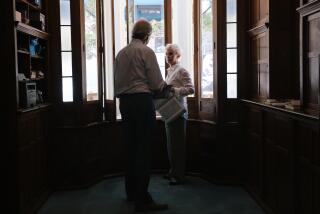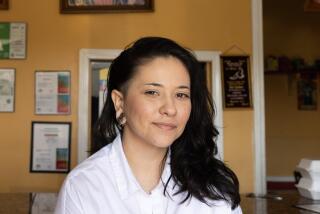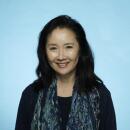Mapping the Religious Quest of Baby Boomers
- Share via
Trying to make sense of the American religious scene on the eve of the new millennium is a courageous enterprise. Bafflingly diverse and in a state of historic flux, American religion today defies easy generalization.
Wade Clark Roof, a religion professor at UC Santa Barbara, has tackled the challenge admirably, doing a yeoman’s job at compiling vast amounts of often surprising information in his latest book, “Spiritual Marketplace: Baby Boomers and the Remaking of American Religion.” The book is a follow-up to his widely acclaimed 1993 survey on the spiritual journey of the baby boomers, whom Roof memorably described as “the questers.”
Roof’s new book integrates follow-up data on five religious subgroups--mainstream, born-agains, metaphysical seekers, dogmatists and secularists--with a wealth of secondary source material. He also presents close-up looks at five seekers.
The close-up portraits help make the book more reader-friendly. But be forewarned: This is not popular reading, but a sociological survey that does not entirely escape the dense language of academics. More than for the curious seeker, the book stands out as an important tool to help religion researchers, journalists, civic officials and others understand the shifts in the American religious landscape.
The book’s most striking finding is the degree of fluidity in the national religious scene. For instance, 70% of spiritual explorers in Roof’s 1988 survey are strong believers in a faith today--but two-thirds of strong believers then have now become doubters or seekers. The finding suggests, to use Roof’s imagery, a grand game of religious musical chairs, with people sometimes seeking a stable anchor, other times yearning for expansive exploration.
Overall, however, Roof finds that the boomers have settled down and gained spiritual maturity in the decade since he first studied them. Boomers are less fixated on self-searching and more committed to giving to others; less focused on finding spiritual insight than depth and meaning. They are still strongly informed by an individualistic ethos, doubt about religious authority and a growing preference for spiritual nurturing in small-group settings--women’s ritual circles, Torah study, 12-step therapy, prayer fellowship and the like.
Even among evangelical boomers, almost half indicate a discomfort with rigid moral rules and an insistence on following the dictates of their own conscience. “The real story of American religious life in this half-century is the rise of a new sovereign self that defines and sets limits on the very meaning of the divine,” Roof writes.
Roof’s research on born-again evangelicals is, indeed, among his most intriguing. Contrary to popular image, he finds them moving in outlook closer to the religious mainstream. This, he says, suggests the emergence of a substantial religious center based on pluralism and tolerance--rather than the polarized images of liberal and conservative “culture wars” he believes are far overdrawn in the media.
Born-agains, for instance, are close to the mainstream in supporting egalitarian marriages: Only 27% of Protestant evangelicals and charismatic Catholics believe husbands should have the main say-so in family matters--far closer to the mainstream’s 20% than the 47% of fundamentalists. Born-agains also can most easily visualize God as mother--perhaps, Roof suggests, because they report the warmest relationships with their own parents.
The book’s most compelling chapter involves family and religion. There are many interesting factoids here: Fundamentalists have higher rates of divorce--despite their stance in favor of the traditional family--than do liberal Protestants. The boomers’ so-called return to organized religion in the early 1990s looks to be a temporary phenomenon linked to the presence of school-age children. Declining church attendance and volunteer activity is linked to the increase in working women. Increasingly pressed for time, more women are finding ways to nurture spirituality for their families through their own at-home rituals, readings and prayers rather than chew up precious weekends at services.
“The radical realignment of work, family and religion now underway is unparalleled in modern American history and bears enormous and as yet not fully fathomed implications for religion,” Roof writes.
Roof concludes that, while local congregations remain the most common religious form in the United States, a dizzying number of new spiritual networks are developing in an increasingly fractured religious landscape. He candidly admits: “Increasingly we do not know the nature of the beast we are examining.”
More to Read
Sign up for our Book Club newsletter
Get the latest news, events and more from the Los Angeles Times Book Club, and help us get L.A. reading and talking.
You may occasionally receive promotional content from the Los Angeles Times.







